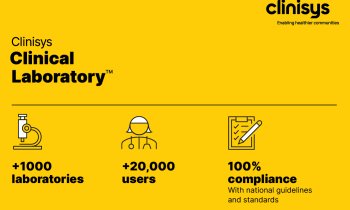Brain has switch board to guide behavior in response to external stimuli
How do our brains combine information from the external world (sensory stimulation) with information on our internal state such as hunger, fear or stress?

©VIB-matuvu, 2013
NERF-scientists demonstrate that the habenula, a specific part in our brain consisting of neural circuits, acts as a gate for sensory information, thus regulating behavior in response to external stimuli.
Emre Yaksi (NERF – VIB/imec/KU Leuven): “Our brain has high levels of spontaneous activity, even in the absence of sensory stimulation. We think that this spontaneous neural activity in combination with sensory stimulation results in a particular internal state of the habenula. By this functional organization the habenula acts as a kind of switch board, selecting certain sensory information and sending it to the downstream brainstem areas. Thus the habenula regulats our behavior. It will be interesting to test whether experience or learning can alter the functional organization of these circuits.”
Unraveling neural circuits
Neuroscientists all over the world are gradually unraveling the processes in our brain. However our brain still remains a mystery. The activity of single neurons and the functioning of ‘one-to-one’
interactions have been examined in detail. Yet, the information processing at the level of neural circuits is less well-understood. Emre Yaksi and his NERF-colleagues integrate neurobiology and nano-scale engineering to study brain function at multiple levels of detail. This multidisciplinary approach enables the researchers to look beyond the brain cells, and it provides them with great tools to study neural circuits and their link with behavior.
Exploring brain structures in zebrafish
Zebrafish is a useful model organism for neurological research. To find out how brains combine external and internal stimuli, Suresh Kumar Jetti, Nuria Vendrell Llopis and Emre Yaksi focused on the dorsal habenula (dHb) in zebrafish. The dHb is an equivalent of the habenula in mammals and relays information from the sensory areas to the brain region that regulates animal behavior under stress conditions. In zebrafish, the dHb receives input from cells of the olfactory bulbthus odors can trigger distinct behaviors (e.g. feeding, courtship, alarm).
Spontaneous activity is highly organized The ongoing spontaneous activity in neurons was thought to be associated with several neurological phenomenons, such as sleep, or the learning and sensory process. The researchers observed that dHb is highly active even in the absence of any sensory stimulation. Moreover they showed that the spontaneous activity of dHb is not random but highly structured in the spatial clusters of neurons. Later the team showed that this spontaneous activity is very prominent during sensory stimulation and governs the odor responses in the dHb. The scientists their conclusion is that dHb acts like a switch board for the sensory information and is controlled by spontaneous activity.
VIB
VIB is a non-profit research institute in life sciences. About 1,300 scientists conduct strategic basic research on the molecular mechanisms that are responsible for the functioning of the human body, plants, and microorganisms. Through a close partnership with four Flemish universities − UGent, KU Leuven, University of Antwerp, and Vrije Universiteit Brussel − and a solid funding program, VIB unites the forces of 83 research groups in a single institute. The goal of the research is to extend the boundaries of our knowledge of life. Through its technology transfer activities, VIB translates research results into products for the benefit of consumers and patients and contributes to new economic activity. VIB develops and disseminates a wide range of scientifically substantiated information about all aspects of biotechnology. More information: www.vib.be.
NERF
Neuro-Electronics Research Flanders (NERF) is a not-for-profit academic research initiative with the ultimate goal of forming a thorough understanding of brain function at multiple levels of detail ranging from cells and circuits to behavior. New insights into the operation of brain circuits are empowered by the development of novel technologies that integrate neurobiology and nano-scale engineering.
NERF is a joint initiative of imec, KU Leuven and VIB, supported by the Flemish Government. www.nerf.be.
imec
Imec performs world-leading research in nanoelectronics. Imec leverages its scientific knowledge with the innovative power of its global partnerships in ICT, healthcare and energy. Imec delivers industry-relevant technology solutions. In a unique high-tech environment, its international top talent is committed to providing the building blocks for a better life in a sustainable society. Imec is headquartered in Leuven, Belgium, and has offices in Belgium, the Netherlands, Taiwan, US, China, India and Japan. Its staff of over 2,080 people includes more than 670 industrial residents and guest researchers. In 2012, imec's revenue (P&L) totaled 320 million euro.
Further information on imec can be found at www.imec.be.
Imec is a registered trademark for the activities of IMEC International (a legal entity set up under Belgian law as a "stichting van openbaar nut”), imec Belgium (IMEC vzw supported by the Flemish Government), imec the Netherlands (Stichting IMEC Nederland, part of Holst Centre which is supported by the Dutch Government), imec Taiwan (IMEC Taiwan Co.) and imec China (IMEC Microelectronics (Shanghai) Co. Ltd.) and imec India (Imec India Private Limited).
KU Leuven
KU Leuven (University of Leuven) is a leading European research university dedicated to excellent research, education and service to society. It is a founding member of the League of European Research Universities and has a strong European and international orientation.
Its sizeable academic staff conducts basic and applied research in a comprehensive range of disciplines. University Hospitals Leuven, its network of research hospitals, provides high-quality healthcare and develops new therapeutic and diagnostic insights with an emphasis on translational research. The university welcomes more than 40,000 students, of which 15.5% are international from more than 140 countries.
Its doctoral schools organise internationally oriented PhD programmes for over 4,000 doctoral students. www.kuleuven.be/english/
17.02.2014











